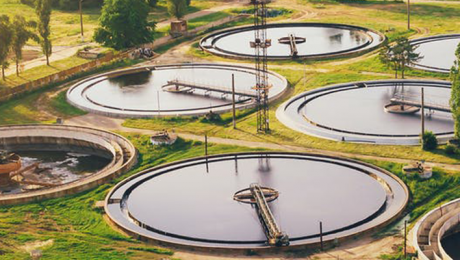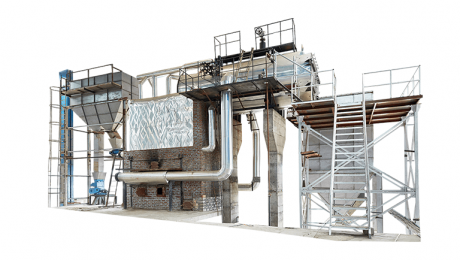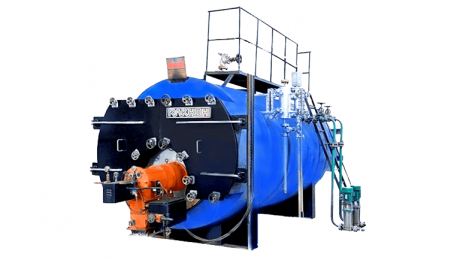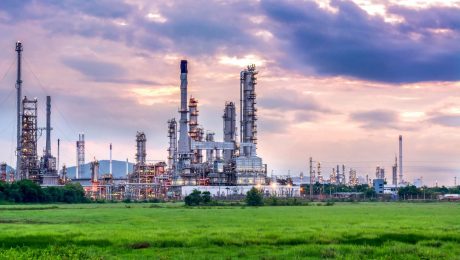- Home
- About Us
- Products
- EPC projects
- Technology
- Services
- Clients
- Media
- Blog
VIEW ALL -
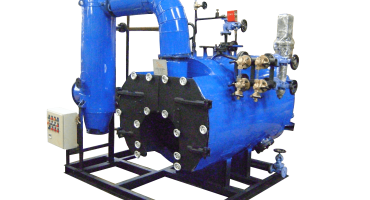 19 July 2023 by bullweb, in Boiler
19 July 2023 by bullweb, in BoilerA Guide to Boiler Maintenance in Chemical Processing Plant
Steam boiler systems are irreplaceable in the chemical process industries. Among...READ MORE +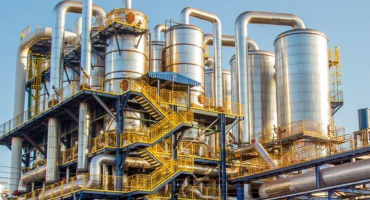 19 October 2022 by bullweb, in Steam Boiler,Steam Jackets
19 October 2022 by bullweb, in Steam Boiler,Steam JacketsSteam Jackets in Boilers | Definition, Types, and Applications
Steam is integral to meet various process operational requirements in manufactur...READ MORE +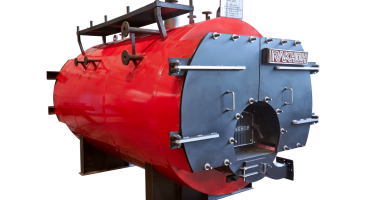 17 October 2022 by bullweb, in Boiler,Steam Boiler
17 October 2022 by bullweb, in Boiler,Steam BoilerSigns that indicate replacement for steam boilers
Steam boilers are vital equipment for steam generation in the process and manufa...READ MORE +
- Careers
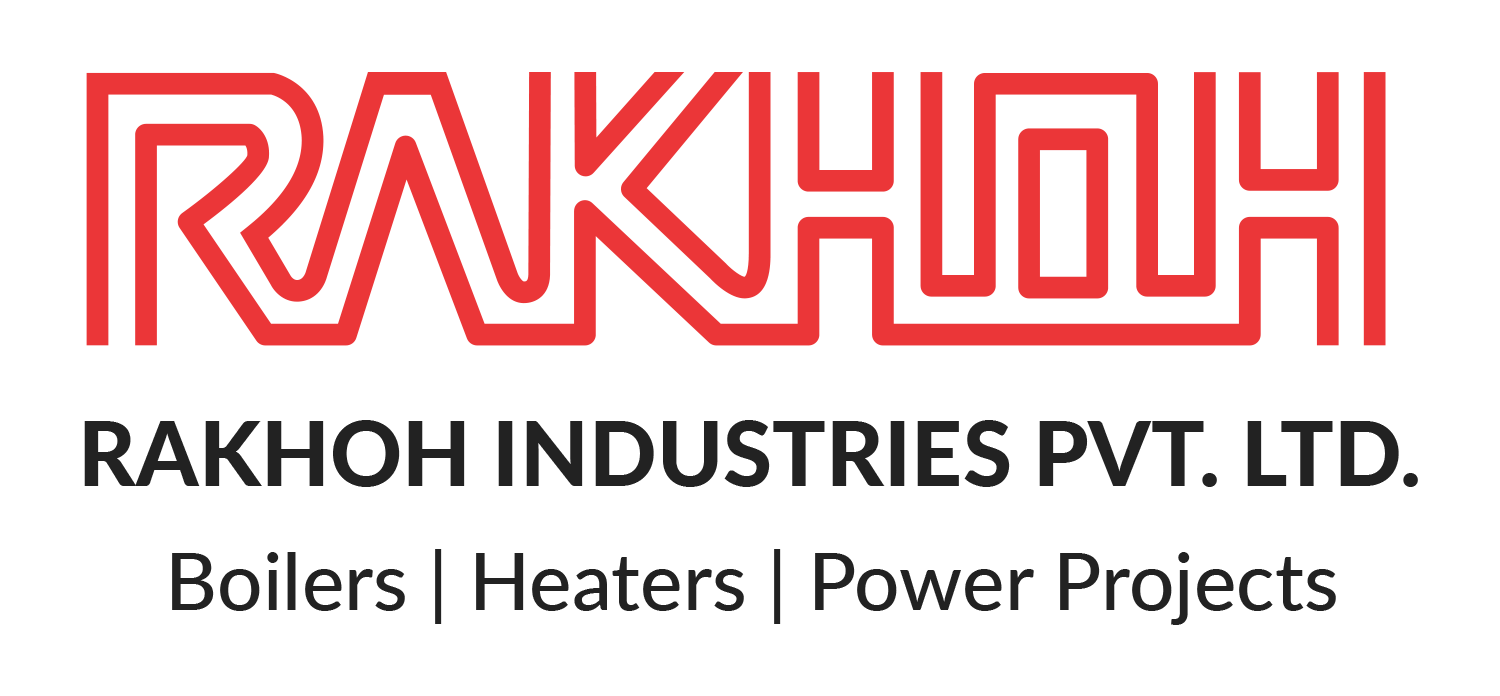
BOILER ACCESSORIES, THERMIC FLUID HEATERS & SPECIALTY FABRICATION.
+9120 - 66308333
Email: enquiry@rakhoh.com
RAKHOH BOILERS
S-11, T Block, M.I.D.C.,Bhosari, PUNE - 411 026. Maharashtra, India
BLOG & STORIES
Industrial steam boilers are imperative for the process and manufacturing industries that include a huge investment while selecting a steam boiler and proper handling. It is important to extend the lifespan of the steam boiler and maintain its efficiency. However, corrosion is a major issue that causes the failure of boilers, which is where the deaeration process comes in. Boiler deaerators are used for the removal of oxygen and other gasses from the water, fed to the boilers for generating steam. Deaerators are useful for removing the gasses attached to the metallic components of the steam system and cause corrosion by forming oxides, or rust. As both oxygen and carbon dioxide cause corrosion, the majority of boiler deaerators remove oxygen to levels that eliminate carbon dioxide.
What is Deaerator in Steam Boiler?
The Deaerator tank stores cold and hot fluid to eliminate the dissolved air or non-condensable gasses present in the fluid. Deaerating feed tanks helps in the removal of non-condensable gasses from a feed. Deaerators also pre-heat the water before it enters the steam boiler. The process helps save energy by recovering flash and exhaust steam from plant returns that would normally be released in the atmosphere and utilizing it to pre-heat the feedwater. The recovered steam can account for 20% of the fuel usually required to provide heat for that process.
Pre-heating the feedwater also reduces the chance of thermal shock caused by the expansion and contraction of heating surfaces and consequently improves the operation of the steam boiler.
Deaerator Tanks serves 3 major purposes:
How Does a Deaerator Work?
Although there are various types of deaerators, it generally operates in the same way. The feedwater enters the deaerator through an inlet water connection. The steam in the tank is introduced with the make-up water that increases the water temperature. It leads to breaking the oxygen and other undissolved gasses and allowing it to escape through a vent located at the top of the deaerator tank.
The water passes through a baffled scrubber section of the tank and is scrubbed with oxygen-free steam. The steam then moves through a spray valve that converts the steam into a fine mist. The water is used by the steam boiler as the gasses vent to the atmosphere.
Types of Deaerators:
The two major types of deaerators used are spray type and tray type,
Generally, the spray-type deaerator is a horizontal vessel that includes a preheating section and a deaeration section with a baffle that separates the two sections. Low-pressure steam enters the vessel through a sparger from the bottom.
The objective of the feedwater spray nozzle and the preheat section is to heat the boiler feed water to its saturation temperature. It facilitates the releasing of the dissolved gasses in the following deaeration section.
The preheated feed water flows in the deaeration section to be deaerated by the steam rising from the sparger system.
Gasses that are released from the water exit through the vent at the top of the vessel. The pumps pass boiler feed water from the bottom of the vessel to the steam-generating boiler system.
Tray type deaerator is a vertical domed deaeration located on top of a horizontal cylindrical vessel. The boiler feedwater enters the vertical section above the perforated trays and passes downward through the perforations.
Low-pressure deaeration steam enters below the perforated trays and moves upward through the perforations. It provides good contact and mixing of steam and the boiler feedwater.
The steam eliminates the dissolved gas from the boiler feed water and exits through the vent valve at the top of the domed section.
The water moves down into the horizontal storage vessel and later on pumped to the steam boiler system. Low-pressure heating steam keeps the stored boiler feed water warm. It enters the horizontal vessel through a sparger pipe in the bottom.
Importance of Deaerator:
Conclusion:
Since its formation in 1983, Rakhoh Boilers strives to enhance and improve the safety of the boiler operations by manufacturing and installing steam boilers of the highest quality to ensure the safety of the process plants and prevent any fatal accidents or injuries to the staff working and operating the plant. As a trusted steam boiler manufacturer, we have successfully installed 3000+ boilers in over 26 countries worldwide.
Learn more about our products and services by visiting www.rakhoh.com
Steam boilers are imperative equipment for the process and manufacturing industries. Therefore, boiler manufacturers in India suggest various ways to maintain the seamless operations of the boiler system. Boiler issues hinder the process operations that cause severe monetary loss for the industries. Among various techniques to avoid boiler problems, boiler shutdown is a prominent one. Boiler preservation is performed when the boiler system is out of service or in shutdown condition for a long duration to protect the boilers’ internal surface from corrosion and atmospheric oxygen.
What is Boiler Preservation?
When a steam boiler is not in use, out of service, or in shutdown condition for a longer period, precaution measures are necessary to prevent corrosion and protect internal metal surfaces from water and residual contaminants.
The preservation method opted varies on the length of the shutdown period and the characteristics of the concerned process plant. In most cases, due to the operational conditions, particularly in power plants, boilers need to be maintained in ready-to-start conditions. Therefore, wet conservation is the ideal solution. But, when the unit is out of service for an extended period, dry conservation is required.
There are two types of boiler preservation methods that are used in specific conditions.
Wet preservation of boiler
Dry preservation of boiler
Wet Preservation of Boiler:
Steam boilers are required in stand-by mode for sudden and quick steam demands are preserved through the wet method. The method is also used for large boiler systems that are difficult to drain.
Boiler pressure parts include economizer, steam drum, water walls, and superheater tube, filled with feed water having a high concentration of Hydrazine (200 PPM). The high hydrazine concentration ensures that the absence of dissolved oxygen is available in feed water. The boiler is kept under pressure to avoid atmospheric air entering into boiler pressure parts.
Steps for wet preservation of boiler:
The boiler should include feedwater to the normal water level than 90% water level of the gauge glass.
Maintain pH up to 9.5-11.
Hydrazine 200 PPM is to be doused with the water. Ensure uniform concentration.
In the case of N2H4 level, if the results of the boiler water sample are low from 100ppm, it requires injecting of N2H4 and in case of N2H4 level above 200ppm requires dilution process by feeding water into the boiler and by taking blowdown frequency.
Sodium sulfite (Na2SO3) 300-400 PPM can also be used in the unavailability of Haydazine.
Avoid using the wet preservation method in a very cold environment or under freezing water conditions.
Dry Preservation of Boiler:
The method is selected when the boiler needs to be shut down for a long period. Dry preservation requires eliminating all water and air moisture to maintain a relative humidity of preferably less than 40%. It prevents corrosion through hygroscopic salts. Dry-air storage is highly effective and easy to monitor. Dry layup enables easy and safe access for maintenance without any suffocation or exposure to toxic chemicals.
Steps for dry preservation of boiler:
The water must be drained out of the boiler. The drum manhole, superheater, blowdown, air cocks, gauge glass, and waterwall box drains need to be opened.
The internal surface of the boiler should be dried entirely with hot air.
After the silica gel on the activated alumina dries, it should be placed inside the drum.
Close all the pressure parts to prevent any leakages of moisture and air.
Boiler inspection should be performed once a month.
Replace the lime trays if required.
How to Shutdown the Steam Boiler?
During the scheduled shutdown, double the normal blowdown rate for two weeks before the shutdown and increase the sludge conditioner dosage to 1 1/2 to 2 times than normal.
With the boiler taken out of service, perform the blowdown several times from all the blowdown outlets, including headers. Follow the guidance of the boiler manufacturer for taking the boiler system out of service. Do not use cold water for cooling the boiler as it leads to leaks in rolled joints.
For preventing the suspended matter (sludge) in the boiler water from baking on the tubes, avoid draining water from a hot boiler. Wash it down after draining the water from the tubes. Flush out all feed and control lines to get rid of any sludge accumulations.
Flush the water-side surfaces with a high-pressure hose and assess to determine if further cleaning is required before lay-up. The slag, soot, and fly ash should be cleaned from the fireside surfaces. The deposits can lead to severe corrosion on the fireside. To protect the fireside from corrosion, it can be coated with light oil after cleaning.
Conclusion:
Rakhoh Boilers is one of the trusted boiler manufacturers in Pune since 1983. With 38+ years of experience and expertise in thermal solutions, we deliver highly efficient and reliable industrial steam boilers, waste heat recovery systems, thermic fluid heaters, and boiler accessories to over 20 process industries in 26 countries worldwide. We provide excellent boiler services to boost the efficiency and productivity of the boilers.
Visit www.rakhoh.com for more details on our products and services
Industrial boilers are essential for providing steam for heating, drying, sterilizing, and power generation in the process and manufacturing sector. Steam traps are integral for performance output in steam boilers. However, steam traps are overlooked during regular boiler maintenance. To consistently produce the desired energy levels for boilers, steam traps are maintained properly. There are various methods to test the condition of a steam trap to determine if it is operating as it should.
What are Steam Traps?
A steam trap is a mechanism filtering out the condensate (condensed steam) and the non-condensable gasses (air) without releasing the live steam from the system.
Depending on the steam system, the amount of condensate steam carried by the trap varies. The trap eliminates condensate as soon as it forms or hinders below the steam temperature.
When picking the right trap for a steam boiler, it should be ensured that it can carry out its given functions, no matter the condition. Steam traps also include different extremes of temperature or water hammer. No matter the conditions, monitoring the steam trap and careful selection is necessary to improve the boiler system efficiency.
Types of Steam Trap:
The three primary types of steam traps are as follows:
- Thermostatic (Functioning by Fluid Temperature Changes)
A thermostatic trap responds to the temperature changes. Therefore, it is an ideal type of steam trap between steam and cooler non-condensable gasses. Its pressure decides the temperature of saturated steam. The steam in the space releases its heat and produces condensate at the steam temperature. The condensate temperature drops to prevent heat loss. The thermostatic trap passes condensate when it is at a lower temperature. As the steam reaches the trap, the temperature will increase and close the trap.
- Mechanical (Functioning by Fluid Density Changes)
Mechanical traps operate by sensing the difference between steam and condensate and include elements like ball float traps and inverted bucket traps. In ball float traps, the ball rises due to condensate. Consequently, the valve opens and transfers the denser condensate. On the other hand, in the inverted bucket trap, the inverted bucket floats as the steam reaches the trap. As it reaches the trap, the steam rises and shuts the valve.
- Thermodynamic (Functioning by Fluid Dynamics Changes)
Thermodynamic traps partly depend on the flash steam formation from the condensate. Thermodynamic traps cannot differentiate between steam and or other non-condensable gasses. Steam traps associated with the thermodynamic trap include the following components– disc, impulse, and labyrinth traps.
How do Steam Traps Work in Boilers?
The primary goal of steam traps is to separate the steam from air and condensate. If a steam trap does not operate properly, it may lead to various issues. It can impact the efficiency and productivity of the boiler pipes and pumps. Leakages would result in the boiler system exerting more energy for producing an equal level of latent heat. Boiler steam traps affect the efficiency of the entire boiler. If the bills are increasing significantly, it is an indication that the steam trap is not operating properly. Therefore, routine steam trap surveys with cost-effective and time-saving techniques are crucial to detect problems early on.
Testing the Steam Traps:
Some common methods for testing the steam traps are as follows,
- Visual Observation:
Visual observation is an important step in determining whether a trap is operating or not. Lack of any condensate discharge or an extremely large amount of steam leaking out of a trap indicates the requirement for trap repair. Steam traps also need to be checked for pinhole, connection joint, and gasket leaks.
- Testing through Temperature:
Determining the inlet condensate temperature of the trap is the first step in the steam trap failure test. Except in cases of intentional subcooling (such as certain low-temperature tracing), the trap inlet condensate temperature should be near that of saturated steam.
Cold Traps (Blocked)
Temperature is helpful while determining if:
- A trap is blocked
- Its capacity is insufficient
Such problems lead to condensation to the backlog, lowering the trap’s temperature. With the low temperature and the application in service, the low reading indicates an undersized trap, incorrect pressure orifice, a blocked trap/strainer discharge failure, or a negative pressure differential condition in the case of equipment supplied through a modulating control valve.
- Testing through Sound:
Condensate flowing through a trap generates sound and vibration as well as the opening and closing valve mechanism of the traps. When a trap is not operating properly, it leads to different types of sounds. Identifying the sound difference can be one method of examining the condition of a steam trap.
For example, in bucket traps scale and other floating debris block the vent hole, causing the inverted bucket to shut temporarily and causing blocked discharge and freeze-ups in certain environments.
Live steam leaking from a trap produces a different sound, which is somewhat, between a whistle and a wave. A whistle is a vapor-based, high pitch sound that cannot be imitated with a liquid.
Routine Steam Trap Maintenance:
With the energy costs and production reliability demand, it is necessary to ensure a regular steam trap maintenance program that can identify defective steam valves, traps, strainer failures, and blowdown valve failures. Oversizing and dirt within the system are two of the most common causes of steam trap failure.
Some of the indications that help in examining steam trap failures are:
- An overly warm boiler room
- The condensate pump water seal is failing prematurely
- Overheating or under-heating in restricted space
- Condensate receiving venting steam
- Difficulty in keeping up with vacuum in the return lines
- Water hammer in steam and condensate lines
- Difficulty in maintaining the boiler operating pressure
- Steam buildup in condensate return lines
- Higher expense in energy bills
- Same temperature of the inlet and outlet lines
Conclusion:
Since its inception in 1983, Rakhoh Boilers have emerged as the leading boiler manufacturer in Pune with 3000+ successful boiler installations in over 26 countries worldwide. We have delivered efficient steam boilers, waste heat recovery systems, thermic fluid heaters, boiler accessories, and boiler services to 20 process industries globally.
For more details, visit our website www.rakhoh.com
Steam Boilers are pivotal for producing steam in process industries for heating, drying, sterilizing, and power generation purposes. Proper combustion is vital for steam production that is ensured by optimal efficiency. Naturally, while selecting a boiler manufacturer, one of the most important factors to consider is the fuel-to-steam efficiency offered by the manufacturer. The knowledge of the fuel-to-steam efficiency of any steam boiler helps with an approximate guess of the operating costs of that boiler that, over time, can be more expensive than the price of the boiler itself. Therefore, the fuel-to-steam efficiency rating of a steam boiler is not something to overlook.
What is Fuel-to-Steam Efficiency in Steam Boilers?
In simple words, the fuel-to-steam efficiency of a boiler is the ratio of BTU (British thermal unit) output divided by BTU input. The input is, in fact, the fuel used for the combustion process in the steam boiler, and the output is the steam generated by the boiler system. Higher fuel-to-steam efficiency leads to more steam generation. In actuality, the higher the efficiency rating results in more value of the money invested in a steam boiler. With the ever-increasing fuel costs, it becomes an attractive prospect for the facilities depending on the industrial steam boilers to maximize its fuel-to-steam efficiency as much as possible as a way to minimize the costs.
Rakhoh Boilers is one of the leading boiler manufacturers in India that provide a range of steam boilers with optimum fuel-to-steam efficiency.
Combustion Efficiency in Steam Boilers:
Steam boiler efficiency is the result of the efficiencies of different components of a boiler system. A steam boiler consists of various subsystems whose efficiency impacts the overall steam boiler efficiency. Two primary efficiencies that eventually determine the boiler efficiency are Combustion efficiency and Thermal efficiency of the boiler system.
The combustion efficiency of the steam boiler indicates the ability of the burner to burn fuel. The two major parameters that decide the burner efficiency are the amount of unburned fuel in the exhaust and excess oxygen levels in the exhaust. As the excess air increases, the unburned fuel quantity in the exhaust decreases. It, therefore, results in reducing the unburned fuel losses but increasing the enthalpy losses. As a result, it is important to strike a balance between enthalpy losses and unburned losses. Combustion efficiency also depends on the fuel that is burned. Combustion efficiency is higher for liquid and gaseous fuels as compared to solid fuels.
How to Improve the Combustion Efficiency in Steam Boilers?
Operating a steam boiler with an optimal amount of excess air reduces the heat loss up the stack and enhances the combustion efficiency. The combustion efficiency indicates how effectively the heat content of a fuel is passed into usable heat. The stack temperature and flue gas oxygen (or carbon dioxide) concentrations are major indicators of combustion efficiency. With complete mixing, a precise amount of air is needed to react entirely with the given quantity of fuel. In actuality, combustion conditions are never ideal, and an additional amount of air is supplied to burn the fuel completely.
The optimal amount of excess air is decided by analyzing the flue gas oxygen or carbon dioxide concentrations. Less excess air causes unburned combustibles (fuel, soot, smoke, and carbon monoxide), while too much causes heat loss because of the increased flue gas flow that reduces the overall boiler fuel-to-steam efficiency.
Fuel-to-Steam Efficiency in Steam Boilers:
Fuel-to-steam efficiency is combustion efficiency minus the percent of heat lost through radiation and convection. Some of the components of combustion, such as fuel specification, stack temperature, excess air, ambient air, and radiation/convection loss contribute to fuel-to-steam efficiency. For example, fuel with higher hydrogen content leads to more water vapor that uses energy while changing phase in the combustion process, causing reduce in efficiencies. Additionally, under similar conditions, the use of fuel oil results in 2.5% to 3% higher efficiency compared to natural gas.
Boiler efficiency is always impacted by the components of combustion. However, unique design characteristics improve the operating efficiency. It includes overall size, heat exchanger design, water circulation, startup time, blowdown, and steam quality.
The size of the steam boiler is a major determinant of its overall efficiency. Small boilers with less surface area are relatively more efficient. The heat exchanger produces steam, with some designs being more efficient in transferring heat than others. Steam boilers with forced or controlled water circulation are more efficient. Boiler system that starts up quickly is more efficient as it does not need to be kept on fuel-wasting warm standby, waiting to respond to increased demand.
Conclusion:
For efficient and reliable steam boilers and thermal solutions for your process plant, contact Rakhoh Boilers, one of the leading boiler manufacturers in Pune with 38+ years of expertise. We have successfully installed 3000+ boilers in over 26 countries worldwide.
For more details on our products and services, visit www.rakhoh.com




